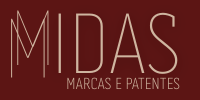Introduction
Registering a trademark with INPI (Instituto Nacional da Propriedade Industrial) is the best way to secure exclusive rights to a brand name, logo, or slogan in Brazil. However, not everything can be trademarked.
Many businesses invest time and money in a brand name only to discover that it does not meet INPI’s legal requirements. As experts say, “A strong brand is built on solid legal foundations”—understanding what is and isn’t eligible for registration can help you avoid rejections and legal issues.
In this article, we’ll explain what can and cannot be registered as a trademark in Brazil, and how to improve your chances of a successful application.
1. What Can Be Registered as a Trademark?
1.1 Trademarks That Identify a Product or Service
A trademark is any distinctive sign that identifies the source of a product or service. It must be unique, memorable, and not purely descriptive.
✅ The following types of trademarks can be registered in Brazil:
1️⃣ Word Marks (Marca Nominativa) – A brand name written in standard text.
📌 Example: Nike®, Coca-Cola®, Natura®
2️⃣ Figurative Marks (Marca Figurativa) – A logo without text.
📌 Example: The Apple logo (without the word “Apple”).
3️⃣ Composite Marks (Marca Mista) – A combination of words and a logo.
📌 Example: The McDonald’s logo with the golden arches and the word “McDonald’s”.
4️⃣ Three-Dimensional Marks (Marca Tridimensional) – A distinctive product shape or packaging.
📌 Example: The Coca-Cola bottle design.
5️⃣ Sound Marks (Marca Sonora) – A unique sound that identifies a brand.
📌 Example: The “Intel Inside” startup sound.
🚨 Important: A strong trademark should be distinctive and unique, ensuring it stands out in the market.
📌 Lesson: Choosing the right type of trademark increases your chances of registration.
2. What Cannot Be Registered as a Trademark?
INPI follows strict rules when deciding whether a trademark can be registered. If a trademark violates any of these rules, it will be rejected.
🚨 The following CANNOT be registered as trademarks in Brazil:
2.1 Generic and Descriptive Terms
❌ Words that simply describe a product or service cannot be registered.
📌 Example: “Delicious Pizza” for a pizzeria.
✅ Solution: Add a distinctive element, such as “Deliciouso Pizza House”.
2.2 Commonly Used Words or Phrases
❌ Words that are too generic and widely used cannot be monopolized.
📌 Example: “Super Clean” for cleaning products.
✅ Solution: Combine it with unique elements, such as “Super CleanX”.
2.3 National Symbols and Government-Related Names
❌ Flags, national emblems, and government symbols cannot be registered as trademarks.
📌 Example: You cannot trademark the Brazilian flag or “Ministério da Saúde”.
✅ Solution: Avoid using official symbols in branding.
2.4 Names of Famous Public Figures Without Permission
❌ A brand cannot use the name of a celebrity or historical figure without authorization.
📌 Example: “Pelé Sportswear” without permission from Pelé.
✅ Solution: Obtain written authorization from the person or their estate.
2.5 Names That Mislead Consumers
❌ A trademark cannot deceive consumers about the nature of a product.
📌 Example: Registering “Organic Café” for a non-organic coffee brand.
✅ Solution: Ensure your brand name accurately represents your products.
2.6 Identical or Confusingly Similar Trademarks
❌ If a trademark is too similar to an existing registered brand, INPI will reject it.
📌 Example: A brand called “Cocca Cola” for soft drinks.
✅ Solution: Conduct a trademark search before applying.
📌 How to Check for Similar Trademarks?
1️⃣ Visit www.inpi.gov.br.
2️⃣ Use the trademark search tool to check for similar names.
3️⃣ Modify your brand name if necessary before applying.
2.7 Trademarks That Violate Morality and Good Conduct
❌ Brands cannot use offensive, racist, or unethical terms.
📌 Example: A brand with explicit or offensive language.
✅ Solution: Choose a name that is appropriate and professional.
2.8 Trademarks That Only Indicate a Geographic Location
❌ A trademark cannot be just a city, country, or region name.
📌 Example: “Rio de Janeiro Coffee” for coffee products.
✅ Solution: Add a unique element, such as “Rio Select Coffee”.
3. How to Improve Your Chances of Trademark Approval
✅ 1️⃣ Conduct a Trademark Search Before Applying
- Check if a similar trademark already exists at www.inpi.gov.br.
✅ 2️⃣ Choose a Distinctive and Unique Name
- Avoid generic or descriptive names.
- Add a creative twist to common words.
✅ 3️⃣ Select the Correct Trademark Classification
- INPI follows the Nice Classification System, which categorizes trademarks by industry.
- Choosing the wrong category can lead to rejection.
✅ 4️⃣ File a Well-Prepared Application
- Include clear and detailed information about your brand.
- If using a logo, submit high-quality images.
✅ 5️⃣ Work With a Trademark Expert
- A trademark attorney can help avoid mistakes and increase approval chances.
📌 Tip: A well-prepared application reduces delays and increases approval rates.
4. What to Do If Your Trademark Application Is Rejected?
🚨 If INPI rejects your trademark application, you have options:
✅ File an Appeal (Recurso Administrativo) – If the rejection was incorrect, you can challenge INPI’s decision within 60 days.
✅ Modify and Reapply – Adjust your trademark name or classification and submit a new application.
✅ Request Cancellation (Caducidade) – If another registered trademark is not in use, you may request its cancellation and reapply.
📌 Tip: Even if your trademark is rejected, alternative legal strategies may still secure your brand name.
Conclusion
Registering a trademark is essential for protecting a brand, but not every name or symbol qualifies for legal protection.
✅ Eligible trademarks must be unique, distinctive, and non-generic.
✅ Certain elements, like government symbols and misleading names, are prohibited.
✅ Conducting a trademark search before applying reduces the risk of rejection.
✅ If your trademark is rejected, you can appeal, modify, or reapply.
As the saying goes, “A well-protected brand is a strong brand.” By understanding what can and cannot be registered, businesses can avoid legal problems and build a solid, legally protected identity in the market.

